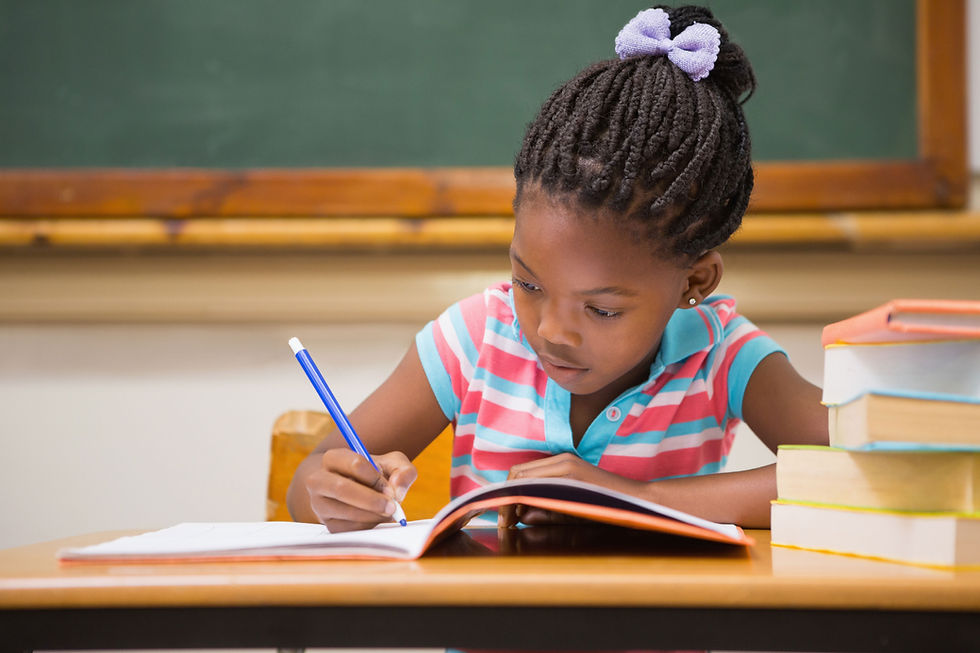Educating for Resilience: How Schools Can Prepare Students for a Changing World
- jgergler
- Sep 16
- 3 min read
The world that today’s students are growing up in is unpredictable. From climate change and technological disruption to social inequality and global health crises, the challenges young people face are unlike those of any previous generation. To succeed in such an environment, children need more than academic knowledge — they need resilience, the ability to adapt, recover, and thrive in the face of change.
At G&N Foundation, we believe resilience should be a core outcome of education. Schools in underserved communities, especially in Northeast Brazil, have an even greater responsibility to prepare students not only for exams, but for life.

What Does Resilience Mean in Education?
Resilience is not about avoiding challenges. It’s about equipping students with the mindset and skills to confront difficulties, learn from them, and move forward.
In education, resilience means helping students to:
Adapt to change without losing motivation.
Manage stress and emotions in healthy ways.
Recover from setbacks such as poor grades, personal difficulties, or broader crises.
Develop problem-solving skills that can be applied beyond the classroom.
When schools nurture resilience, they give students the confidence that they can face not only academic obstacles, but life’s uncertainties.
Why Resilience Matters More Than Ever
The importance of resilience is clear in today’s context:
Climate-related disruptions: Floods, droughts, and other disasters increasingly affect schools and communities, forcing children to adapt to sudden changes in their daily lives.
Economic instability: Families often experience financial insecurity, which affects students’ focus and attendance.
Rapid technological change: As AI and digital tools reshape industries, adaptability becomes essential for future careers.
Mental health challenges: Rising rates of anxiety and depression among students highlight the need for coping strategies and emotional strength.
Without resilience, these challenges can push vulnerable students to disengage or drop out. With resilience, they can learn to face difficulties and stay on track.
How Schools Can Teach Resilience
Resilience isn’t an abstract concept — it can be intentionally taught and nurtured. Schools can play a vital role by integrating resilience into their daily practices:
1. Encourage Growth MindsetTeaching students that intelligence and skills can be developed through effort helps them see mistakes as opportunities, not failures.
2. Promote Social-Emotional Learning (SEL)By teaching emotional regulation, empathy, and communication, SEL programs give students tools to manage stress and build positive relationships.
3. Provide Supportive RelationshipsTeachers, mentors, and peers create networks of trust that help students feel safe and motivated to take on challenges.
4. Use Project-Based LearningReal-world projects encourage teamwork, creativity, and problem-solving, preparing students for unpredictable scenarios.
5. Celebrate PersistenceRecognizing effort, not just results, reinforces resilience and the value of perseverance.
The Role of Communities
Schools cannot do this work alone. Families and communities are essential partners in building resilience. When parents, caregivers, and local organizations support schools, they help create an ecosystem where students learn that setbacks are temporary and that support is available.
In underserved regions, resilience is not a luxury — it is a survival skill. Strengthening community ties ensures that students are not left to face challenges on their own.
How G&N Foundation Supports Resilience
At G&N Foundation, we are committed to helping schools equip students with the skills they need to thrive in uncertain times. Our initiatives focus on:
Supporting teacher training in social-emotional learning and inclusive practices.
Funding programs that combine academics with life skills.
Providing scholarships that relieve financial pressures, giving students the stability to focus on their education.
Strengthening communities by promoting partnerships between schools, families, and local organizations.
For us, resilience is not just a skill — it is the foundation of hope and opportunity.
Final Thoughts
Education cannot shield children from life’s challenges, but it can prepare them to face those challenges with courage and confidence. Resilient students are better equipped to succeed in school, contribute to their communities, and pursue meaningful futures.
By making resilience a core part of education, we prepare not just for the world as it is, but for the world as it will be.





Comments